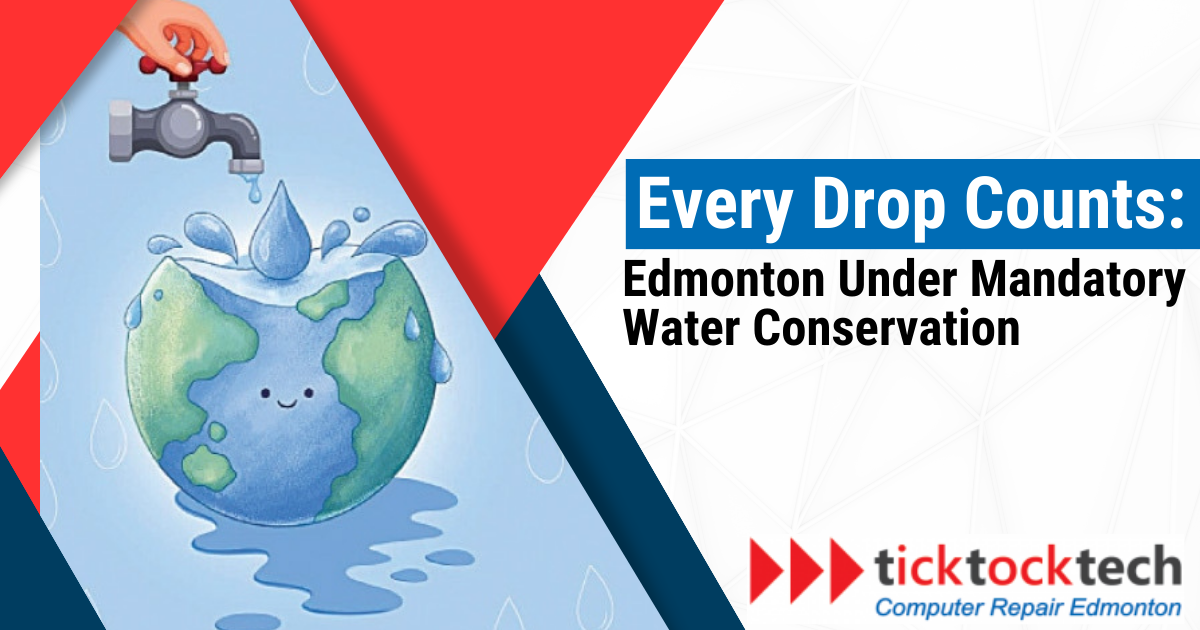One of the many ways of ensuring the sustainability of water is by maximizing its usage. Fresh water in many cities is hard to come by, although it is mostly regarded as government incompetence, but it is not always so. The community and individuals also have a role to play in maintaining and sustaining fresh water supplies. One way of ensuring this is by water conservation. This is the practice of using water efficiently to reduce unnecessary water usage. Fresh water is quite expensive to pay for, especially in cities like Edmonton, which needs conservation.
Though hundreds of parameters are adjusted to provide the best and safest drinking water, the Edmonton water supply still undergoes laboratory testing for water quality. Given the high cost of these procedures and the fact that the requirements increase with usage, it is the responsibility of citizens to protect water levels. Furthermore, as water bills rise, households should seriously consider conserving water, even if they are unaware of the process. However, that is for normal daily cases, Of recent, the Edmonton Water supply plant had an issue due to equipment failure, which led to a compulsory water conservation. Here’s what happened and how it’s going
Why Edmonton started a mandatory ban on non-essential water use
Following the devastating breakdown of the E.L. Smith Water Treatment Plant on January 29, Edmonton was left with a severe scarcity of clean drinking water, endangering the city’s capacity to provide for its citizens’ basic needs. The city was forced to take drastic measures to conserve water because the 4,000 horsepower pumps at the plant were out of commission and the limited supply from the Rossdale Water Treatment Plant could not keep up with demand. This led to the compulsory Edmonton water conservation.

As a result, Edmonton enforced a law prohibiting the use of non-essential water, thereby stopping all non-essential water use in the city. This courageous choice bought the city much-needed time to fix the damaged infrastructure and bring back full water service, all while ensuring that the meager water supply would be adequate for drinking water and fire protection. But the quick-thinking Edmontonian firm EPCOR got right to work and began fixing it right away. The E.L. Smith plant was shut down by 9 p.m. on January 31. After that, high-voltage cable replacement and other electrical system repairs got underway. Workers and contractors from EPCOR worked through the night to finish the replacement the following day.
Dead computer? Fix it near you in Edmonton with TickTockTech
Edmonton Lifted Ban on Non-essential Usage
The tenacity and resolve of the city’s inhabitants have never been put to the test as it fights to recover from this catastrophic blow. There is some optimism that Edmonton will be able to overcome this crisis and come out stronger than before now that the mandatory water ban is in effect.
The rapid response of the city has provided its residents with an opportunity to adapt and triumph, and the outlook for the future is becoming increasingly positive by the day. There is enough production and reservoir supply to meet normal demand without restrictions, according to an evaluation conducted on February 2. Additionally, the system’s water resources were evaluated and confirmed to be sufficient for industrial and residential use. Restrictions on water usage were thus lifted.
The Alberta Water Act
The Alberta Water Act is designed to ensure the responsible and effective management and utilization of water resources within the province. This is achieved by creating water management plans for each of the 11 water management zones.
Water use permits are required for all water users, whether they are involved in agriculture, industry, or municipal activities. This requirement is mandated by the Act, ensuring that water usage is regulated and monitored.
The Act establishes water quality standards for both surface and groundwater, to safeguard human health, aquatic life, and the environment.
Alberta’s government oversees water management, including facility inspections and sample collection as needed.
Public engagement is crucial in water management planning and decisions. This is done to promote transparency and engage stakeholders effectively. The Act requires diligent monitoring and reporting to accurately track water usage and assess environmental impacts. Involving stakeholders in the decision-making process.
Its goal is to promote transparency and sustainable practices in water management. This assists the city in maintaining sustainability and adapting as necessary.
Before you buy a new computer, check if it can be fixed, Call TickTockTech Today
Take Away
The recent water crisis in Edmonton highlighted the importance of responsible water conservation. The mandatory water conservation measures were prompted by a breakdown in the water treatment plant. This demonstrats the city’s resilience in the face of adversity. While residents adjusted to the temporary ban on non-essential water use, the incident highlighted the importance of protecting water resources. The Alberta Water Act regulates and monitors water usage, emphasizing transparency and sustainability. Collective efforts are critical to ensuring responsible management of water resources for a sustainable future.

